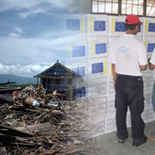It will take a long time to overcome the aftermath of the earthquake of December 26, which unleashed the enormous tsunami that drowned much of Southeast Asia . The survivors of that disaster now face a range of illnesses, epidemics, abuses, and shortages of food and medicine. Moreover, they lack the infrastructure required to reconstruct their homes, cities and towns. Governments, non-governmental organizations, corporations and ordinary citizens throughout the world have tried to help out, but the enormous scale of the destruction makes it harder for humanitarian workers to do their jobs. To prevent a repeat of this tragedy, it will be necessary to coordinate efforts, reduce improvisation to a minimum and maximize efficiencies.

Sign up to stay informed about our latest article releases.